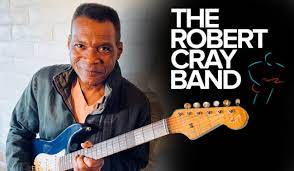by Rikki Lee Travolta
I’ve loved music all my life. My first instrument was a plastic accordion that, in one of my earliest memories, I clung to like a life preserver at three years old – right up until it sprung a leak.
I would get in trouble when I broke my toys. So, once the accordion stopped working, I figured the easiest way to get a new one would be if it got lost.
Unfortunately for me, every time I “forgot” it at a friend’s house, it would be found and returned. Not the most creative planning on my part, I guess. But, what do you expect from a three-year-old?
Throughout my life, I’ve been blessed to be connected to music in various ways. I’ve written songs, recorded albums, and appeared in concerts. But I’m more widely known for what I’ve done with other people’s music careers – from performing in musicals to my behind-the-scenes promotions work in the record industry to my current status as the publicist for Steven Adler.
While I’ve had a lot of success in heavy metal and hard rock, I am by no means only interested in that genre. I just enjoy quality music. I love everything from Classical to Country to R&B.
One style of music that struck a chord with my heart at an early age is the Blues. My earliest music influence was Elvis Presley – who was not a Blues artist, but did steal a lot of his signature style from Beale Steet. The influences of Otis Blackwell, B.B. King, Big Boy Crudup, Fats Domino, and Big Mama Thorton are very clear in the music of the man they called the King of Rock n’ Roll.
I have an uncle who is a Blues record producer. He exposed me to some really cool artists growing up. In fact, it was thanks to him that I got to sing with the great Gospel and Blues legend Gloria Hardiman and be in the studio honing my producer skills as an assistant for recordings by Kenny Saydak.
One of my earliest gigs in entertainment marketing and publicity was for a concert date by Robert Cray, who is a Blues artist who had a few successful cross-over hits including “Smoking Gun” from the Grammy-winning Strong Persuader album. Robert does the vocals on his records, and does a great job, but his claim to fame will always be his guitar work.

Strong Persuader was not Robert’s only brush with the mainstream. At Keith Richard’s invitation, he appeared in Chuck Berry’s backup band for the film Chuck Berry: Hail! Hail! Rock n’ Roll. He also appeared on television with Tina Turner and he served as the opening act for Eric Clapton.
The concert I was helping to promote was one of the early dates on a solo tour by Robert and his band. I still remember the day of the concert and how it led to one of the most memorable displays of guitar work I’ve ever seen.
Robert and the band showed up in the early afternoon to do load-in and sound check for the show scheduled for later that evening. That’s when Robert’s manager broke some bad news to him.
Apparently, the night before the rhythm guitarist in his band had broken his hand. With the concert scheduled to start in a few hours, that presented a bit of a problem.
It is not uncommon for guest musicians to fill in for missing band members on short notice. At the level that these recording artists operate at, there are elite players who can step in at a moment’s notice.
Michael Thomas is a guitarist with that level of musicianship in my circle, where he can learn necessary guitar parts remarkably fast. Michael effortlessly creates the music of Guns N’ Roses in gigs with Steven Adler – which is an impressive talent. Previously he played with Faster Pussycat (also one of my favorite bands) and he told me that when he first joined that group, he learned the set list on the flight to join the band for their next show. That’s freakin’ talent.

However, Robert Cray’s gig was in a town in the middle of nowhere – six hours from a major city. There was no way to get someone to fly in and cover the rhythm guitar parts for the show that night.
Well, Robert Cray is at that level of magical talent where he can just make things work.
“That shouldn’t be a problem. I’ll just play both parts,” Robert said, then calmly walked away to grab something to quench his thirst.
I think if it was physically possible, my jaw would have hit the floor from how cool and unphased he was. I tried to figure out how it would even be physically possible to play two guitar parts at the same time.
During the sound check a little later, Robert broke a guitar string. Naturally, the band took a break while the guitar tech restrung the instrument. After he had the new string on and the guitar tuned, the tech strapped it on and tested it out.
Everyone’s always looking for their big break. And you have to. Very rarely is life going to hand you any gifts. I know in my case; I’ve clawed tooth and nail for every success I’ve had.
When Robert didn’t immediately indicate for the tech to stop playing, the youngster took that as his opportunity to show what he could do. Another roadie soon jumped on the drums and the duo did a little concert.
It’s not uncommon for roadies to be aspiring musicians themselves. Sometimes it pays off. In one of the most famous examples of a guy from the crew making the big time, David Gilmour was a roadie for Pink Floyd before being asked to join the band as a guitarist.
Frank Bello is another example of a guy who rose through the ranks. Frank was a roadie and guitar tech for Anthrax. When the opportunity presented itself, he slipped easily into replacing Dan Lilmker on bass for the band’s second album and has held the job ever since.

Sometimes roadies make it big, but not with the band they’re lugging equipment for. Ben Shepherd was a roadie for Nirvana before he got the opportunity to join Soundgarden on the bass. Interestingly, Nirvana bassist Krist Novoselic was himself a roadie for the Melvins before he and Kurt Cobain formed the band that would take them to fame and fortune.
I don’t blame the guys at the Robert Cray sound check for taking their shot at impressing the guys in the band. But the fact is, while there are some guys in the wings who have the chops to compete on the big stage, there are many more for whom the spotlight is not going to be in their destiny.
The two Robert Cray roadies were both probably great at their jobs supporting the artists on the tour. But what they showed that day in terms of musicianship wasn’t up to the standards needed to really impress. A couple of the guys in the band were amused. That’s about all the attention they generated.
That night though, Robert showed exactly what star talent is. He was brilliant. And remember, he was playing songs arranged for two guitar parts without the benefit of the other guitarist. That would be like me doing a production of “Romeo & Juliet” and having to play both parts with no advance preparation.
I’m not a technical whiz on guitar. I’ve always been a singer. I own guitars that I like to make sounds with, but I don’t claim to be a guitar player.
However, I didn’t have to understand how Robert was seamlessly playing both lead and rhythm that night to know it was an incredible feat. You don’t have to be a music genius in order to appreciate music genius – which is exactly what Robert Cray put on display.
You never know where you’re going to see brilliance make an appearance. But when it happens, you’ll recognize it. Take a mental capture of those moments – not just the events, but the emotions they stir in you.
I’d been to my fair share of concerts before that, and I have been to many more since then. I can’t say that every concert experience is emblazoned in my mind. Some memories have faded with time, others may have been chemically or herbily erased in the past pursuit of ecstasy.
My Robert Cray experience will always stand out, though. He didn’t jump all over the stage like some of my favorite frontmen do. He didn’t lay down effects-laden screeching solos like some of my favorite guitar showmen do. And he certainly didn’t play to backing tracks.
What Robert Cray did do was put on a show that demonstrated the ultimate in musicianship. That is a special kind of talent.




